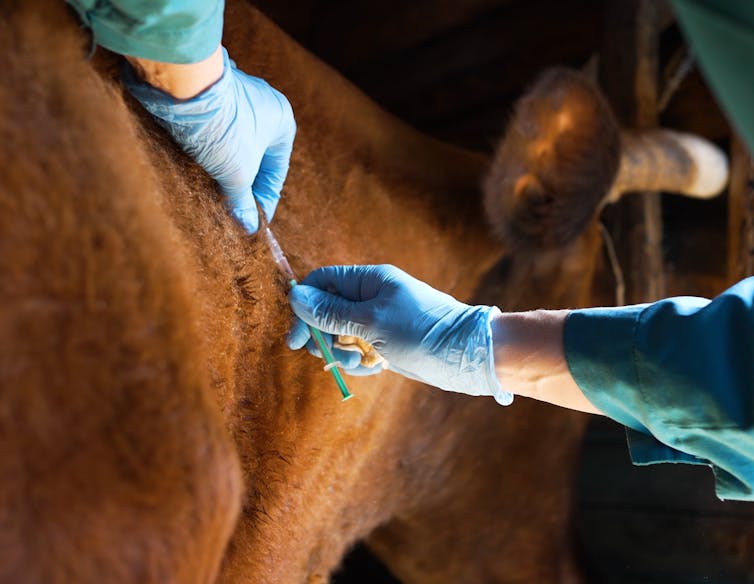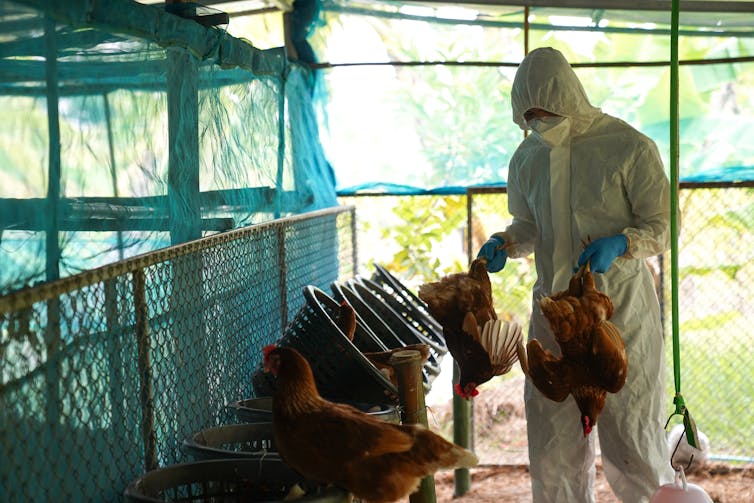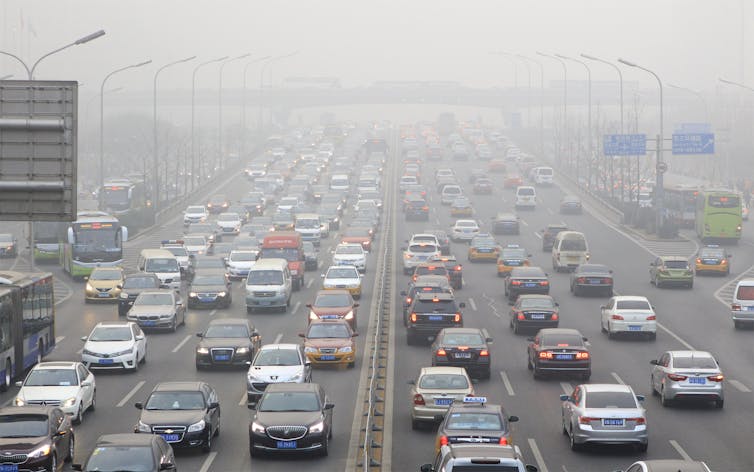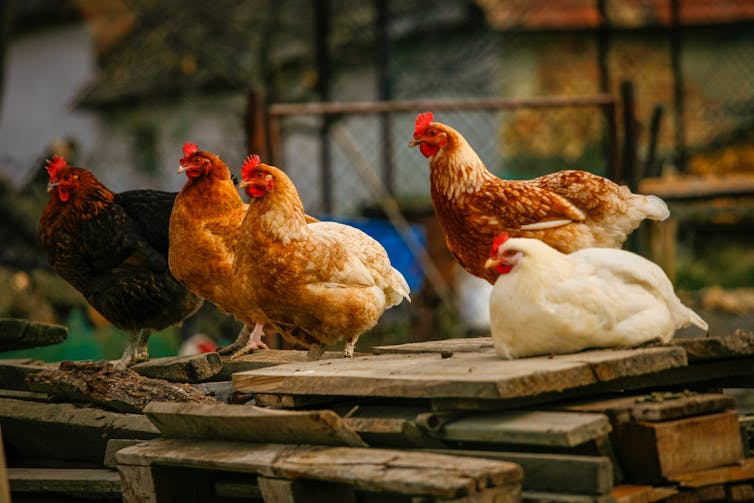
Animal diseases have a devastating impact on livestock production. In 2022, for example, 131 million domestic poultry died or were culled as a result of avian influenza (also called “bird flu”).
Yet the cost of livestock disease goes beyond a shortage of turkeys for the holiday season. Every animal that is lost to a preventable disease is also associated with greenhouse gas emissions that the planet cannot afford.
Animal diseases reduce the productivity of a farm. This is because livestock grow at a slower pace, are unable to reach target weights or fail to reproduce. Diseases may also drastically increase the rate at which livestock die.
Diseases with high mortality levels, such as classical swine fever or avian influenza, mean farmers need to use more resources and raise additional animals to maintain food production. This will cause the generation of more greenhouse gas emissions.
However, controlling common animal diseases effectively through tools like vaccination proves to be a sustainable way of tackling climate change. According to new research that was carried out by one of us (Jude Capper), controlling “high pathogenicity” avian influenza – a virus that can cause severe disease and death in infected poultry – with vaccines would reduce greenhouse gas emissions by almost 16% per kilogram of meat without having to resort to culling.

Pordee_Aomboon/Shutterstock
Reducing emissions
Using vaccines to prevent disease also supports better food security and livelihoods. Porcine reproductive and respiratory syndrome is endemic in countries including the US, China and Vietnam. The virus does not always kill infected pigs, but it limits output from swine farms as it affects reproduction and growth. In affected herds, up to 19% of sows fail to produce piglets and 75% of young pigs die before weaning.
Every 100,000 sows spared from porcine reproductive and respiratory syndrome would prevent more than 420,000 tonnes of greenhouse gas emissions. This is equivalent to removing more than 230,000 cars from the road, and means greenhouse gas emissions per kilogram of pork would fall by 22.5%.
Similarly, eliminating foot and mouth disease where it is endemic (many low- and middle-income countries in Africa and Asia) would cut emissions by more than 10% per kilogram of product. Foot and mouth disease is highly contagious and led to a crisis for UK agriculture when it hit in 2001. The disease is a major cause of reduced production around the globe, despite not always killing livestock.

testing/Shutterstock
Controlling outbreaks
More than 80% of farms in low-income countries are smallholder or backyard operations. This type of farm generates more greenhouse gas emissions per unit of meat, milk and eggs than commercial farms because of lower productivity.
Farms in these countries are reservoirs of disease. This means the threat of a global outbreak – and the associated implications for greenhouse gas emissions – is never zero. These reservoirs occur because of a lack of disease surveillance, infrastructure, trained personnel and available medicines to detect, record and control livestock diseases.
Nevertheless, controlling endemic livestock diseases through vaccination reduces the risk of outbreaks across species and regional borders. By controlling avian bronchitis (a highly contagious respiratory disease mainly in chickens) where it is endemic among backyard poultry, we can reduce emissions by more than 11% while also limiting the risk of an outbreak.
Outbreaks can undermine global trade, production and food security. Economic analysis of an African swine fever outbreak in China found that low pork supply would increase global pork prices by between 17% and 85%. The findings also suggest that unmet demand would have significant consequences for the affordability of other meats.
Vaccination also helps to address the threat of antimicrobial resistance, which poses a major threat to human health around the world. Research estimates that antimicrobial resistance was associated with around 5 million deaths globally in 2019.

goodbishop/Shutterstock
Moving towards sustainability
Our food system is responsible for one-third of global greenhouse gas emissions. Improving animal health would thus make a significant contribution to meeting the IPCC’s challenge of halving emissions by 2030.
At the same time, it would minimise the broader environmental impact of farming through efficiency gains. This is particularly crucial in low-income countries where the inability to control or treat livestock diseases has greater consequences for malnutrition, poverty and human health.
Sustainable food production balances three components: environmental responsibility, economic viability and social acceptability. Using vaccines to reduce livestock disease around the globe is one of the few innovations that improves all three – benefiting animals, people and the planet.
——————————–
This blog is written by David Barrett, Professor of Bovine Medicine, Production and Reproduction, University of Bristol and Jude Capper, Professor of Sustainable Beef and Sheep Production, Harper Adams University. This article is republished from The Conversation under a Creative Commons license. Read the original article.
